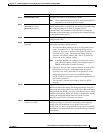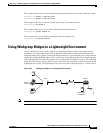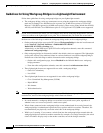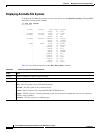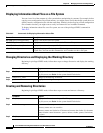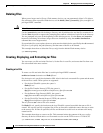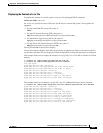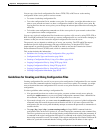
20-3
Cisco IOS Software Configuration Guide for Cisco Aironet Access Points
OL-30644-01
Chapter 20 Managing Firmware and Configurations
Working with the Flash File System
Setting the Default File System
You can specify the file system or directory that the system uses as the default file system by using the
cd filesystem: privileged EXEC command. You can set the default file system to omit the filesystem:
argument from related commands. For example, for all privileged EXEC commands that have the
optional filesystem: argument, the system uses the file system specified by the cd command.
By default, the default file system is flash:.
You can display the current default file system as specified by the cd command by using the pwd
privileged EXEC command.
Flags Permission for file system.
ro—read-only.
rw—read/write.
wo—write-only.
Prefixes Alias for file system.
arch:
ram:
bs:
archive:
tmpsys:
xmoem:
ymodem:
scp:
tar:
https:
flash:—Flash file system.
ftp:—File Transfer Protocol network server. Used to transfer files to or from the network device.
nvram:—Non-volatile RAM memory (NVRAM).
null:—Null destination for copies. You can copy a remote file to null to determine its size.
rcp:—Remote Copy Protocol (RCP) network server.
system:—Contains the system memory, including the running configuration.
tftp:—Trivial File Transfer Protocol (TFTP) network server.
zflash:—Read-only file decompression file system, which mirrors the contents of the Flash file system.
Table 20-1 show file systems Field Descriptions (continued)
Field Value



